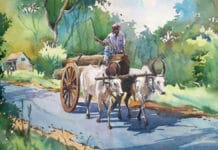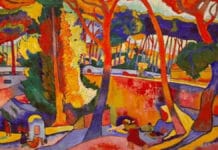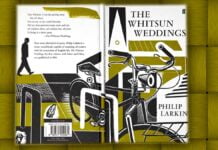Margaret Eleanor Atwood’s poem Journey to the Interior is a profound exploration of the human psyche, framed metaphorically as a journey into an unknown and complex interior landscape. It is a metaphysical poem with the recurring motif of ‘journey’ that Atwood explores in other works like Surfacing. Written in free verse, the poem uses rich imagery and metaphors to draw parallels between physical journeys through the wilderness and psychological or introspective explorations of the self.
The Metaphor of the Journey
Atwood begins by drawing parallels between a physical landscape and the mind’s terrain. The external world, filled with hills, trees, and rivers, becomes a metaphor for the internal world of thoughts, emotions, and memories. However, she quickly establishes that the inner journey is more ambiguous and challenging, lacking clear markers or reliable tools for navigation.
Unpredictability and Complexity
The poet describes the mind as a treacherous and unpredictable landscape. Unlike a physical journey, which might be guided by maps or compasses, the inner journey has no such aids. The mind is portrayed as a place of shifting perspectives, where clarity is elusive, and the path is often obscured.
Psychological Dangers
Atwood warns of the psychological risks of delving too deeply into one’s consciousness. Much like a wilderness, the inner world is filled with potential pitfalls, such as confusion, despair, or the temptation to turn back. She emphasises the difficulty of maintaining a sense of direction and purpose in such an uncertain and abstract realm.
Isolation and Solitude
The journey is portrayed as a solitary endeavour. Atwood reflects on the isolating nature of introspection, suggesting that it requires courage to face the unknown within oneself. The lack of companionship or external guidance underscores the deeply personal and individualistic nature of self-discovery.
Open-Ended Conclusion
The poem concludes without a resolution, reflecting the continuous and evolving process of introspection. Atwood suggests that self-discovery is not a journey with a definitive endpoint but an ongoing exploration that requires persistence and adaptability.

Themes
Exploration of the Inner Self
The poem examines the intricacies and challenges of navigating one’s inner consciousness. Atwood likens this introspection to a physical journey through an unpredictable and treacherous wilderness, emphasising the parallels between the external and internal terrains.
The Journey as a Metaphor
The poem describes a literal journey into an untamed landscape, symbolising the complexity and uncertainty of self-exploration. This journey is not linear or straightforward but is filled with ambiguities, dangers, and unexpected discoveries.
Imagery and Symbolism
Atwood’s use of vivid imagery enriches the poem. Phrases like “trees grow spindly” and “shadows curl like smoke” evoke vivid visuals, grounding the abstract concept of self-exploration in tangible elements. The symbols are multi-layered, allowing readers to interpret them in diverse ways.
Landscape as the Mind
The physical elements of the landscape —forests, mountains, rivers —serve as metaphors for the layers of the human mind. Atwood writes about “shadows, cliffs, slopes,” which suggest the unpredictability and depth of the inner self.
Uncertainty and Isolation
The “wilderness” represents the psychological challenges of understanding oneself. It is vast, undefined, and isolating, echoing the confusion and solitude that often accompany self-reflection. The speaker acknowledges the difficulty of this journey, mentioning paths that “dwindle and disappear.”
Deceptive Familiarity
Atwood points out that the landscape may seem familiar at first but becomes increasingly alien and deceptive. This reflects how we often think we know ourselves but face unexpected revelations when we delve deeper.
Objects and Tools
The mention of objects like “a compass” symbolises the tools we rely on for direction in life. However, these tools are not always reliable when navigating the complexities of the human psyche.
Tone and Mood
The poem’s tone is contemplative, introspective, and slightly foreboding, reflecting the seriousness and depth of the inner journey. Atwood adopts a reflective voice, acknowledging the difficulty of self-exploration while highlighting its necessity. The mood shifts from initial curiosity to uncertainty and caution, creating an atmosphere of vulnerability.
Structure and Style
The use of free verse reflects the unstructured and organic nature of introspection. Atwood’s language is clear yet evocative, blending poetic beauty with philosophical depth. The fragmented and stream-of-consciousness style adds to the poem’s authenticity.
Free Verse
The lack of a rigid structure mirrors the unpredictable and fluid nature of the described journey.
Stream of Consciousness
Atwood’s style mimics the natural flow of thoughts, reflecting the speaker’s introspective process.
Fragmentation
The fragmented descriptions reflect the fragmented nature of self-discovery, where clarity is elusive, and understanding emerges gradually.
Language and Literary Devices
Metaphor
The entire poem is an extended metaphor, comparing the human mind to a wilderness that is difficult to navigate.
Personification
Atwood personifies the landscape, giving it agency and unpredictability, which mirrors the complexity of human thought.
Allusion
References to tools like compasses and sun movements allude to traditional navigation methods, emphasising their futility in the inner world.
Ambiguity
The poem deliberately avoids providing clear answers or resolutions, reflecting the uncertain nature of introspection.
Philosophical Undertones
The poem delves into existential themes, questioning the nature of self-knowledge and the human tendency to seek meaning in chaos. Atwood suggests that understanding oneself is as challenging and perilous as exploring an uncharted wilderness.
Psychological Depth
The poem captures the intricacies of human psychology, emphasising how difficult and unpredictable it can be to navigate one’s inner world. Atwood portrays the mind as a place of both wonder and danger, where paths may “dwindle and disappear.”
Exploration of Uncertainty
Atwood masterfully captures the uncertainties of life and self-discovery. The speaker’s acknowledgement of the “illusions of clarity” in the journey mirrors real-life struggles with self-understanding, where the path is rarely straightforward.
Feminist Undertones
Although not overtly feminist, the poem’s exploration of inner strength and resilience can be interpreted as a subtle nod to the empowerment of women. The journey into the self is portrayed as an act of courage and determination.
Journey to the Interior is a masterpiece of introspective poetry, blending vivid imagery with deep philosophical inquiry. It challenges readers to reflect on the complexities of self-awareness and the courage required to embark on such a journey. Through her evocative language and profound metaphors, Atwood elevates the act of self-reflection into a universal and timeless quest for understanding. Her ability to weave abstract ideas into tangible imagery makes this poem a timeless reflection on the human experience.






























